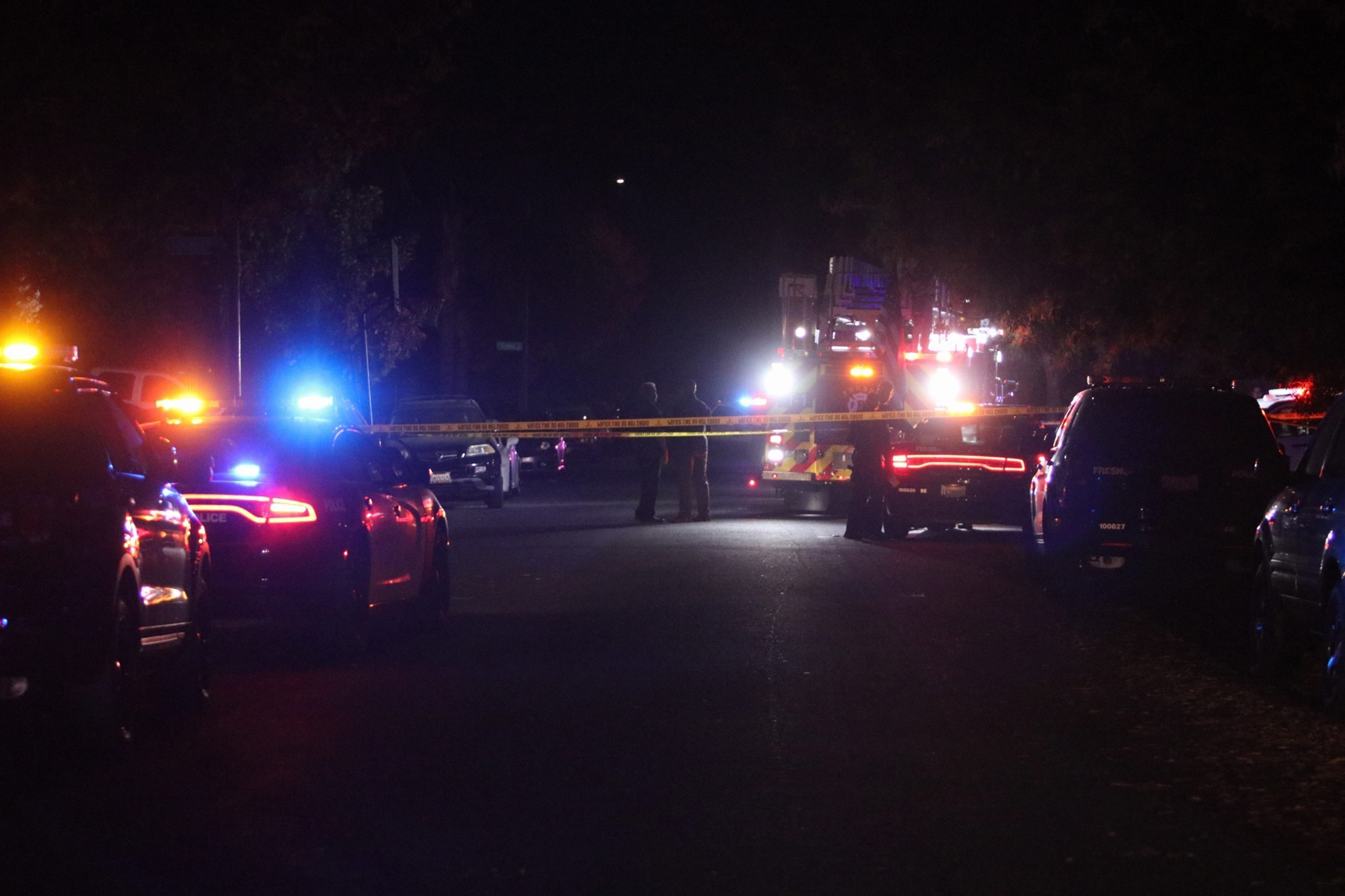On November 17, gunmen opened fire on a gathering of family and friends watching a football game in Fresno, California. Four people were killed in the attack, and six more wounded.
The incident was by far the deadliest and most brazen shooting to occur in the city of 500,000 this year. But it was hardly the first case of gun violence. Fresno has a homicide rate roughly twice the state average, according to federal statistics. On July 4, two rival groups exchanged 58 shots, leaving one man dead. Less than a week later, a 5-year-old boy was shot while strapped in the back seat of his mother’s car.
In an effort to stem the violence, many advocates and Fresno residents have pushed city leaders to adopt an innovative violence interruption model called Advance Peace. The program, which was developed in the nearby California city of Richmond, provides resources — like education, job training, addiction services, and counseling — to those most at risk of being a perpetrator or victim of gun violence. It also has a unique and controversial feature: Participants receive a monthly stipend for staying out of trouble.
“Fresno has long needed Advance Peace,” said Marcel Woodruff, an organizer with Faith in the Valley, a community outreach group that has advocated for the adoption of the program. Woodruff said he believes that Advance Peace could lead to a significant reduction in gang-related violence by providing young men with services that they otherwise struggle to get.
In July, the Fresno City Council heeded activists’ calls and authorized $200,000 to fund the program in 2020. But Mayor Lee Brand, a Republican, vetoed the proposal, citing a lack of scientific evidence that the program works.
A dearth of independent analysis for community violence prevention programs is not uncommon. Advance Peace and other programs — particularly small-scale ones — frequently lack the budgets to fund studies of their effectiveness, even as they draw the support of gun violence researchers.
But since Brand’s veto, Advance Peace and its supporters caught a break. In October, the American Public Health Association released a report measuring the efficacy of the program in Richmond, California. It found that as a result of the model instituted there in 2010, violent gun crime declined by 43 percent and gun deaths dropped by 55 percent.
The Trace contacted Brand’s office to see whether or not the report had changed his opinion on funding Advance Peace. “Although the results of this study are not definitive,” said a spokesperson for the mayor’s office in an emailed response, “they are promising and they will help guide our efforts to develop efforts tailored to the realities of Fresno.” The spokesperson declined to specify why the findings were not definitive.
The report, along with the ongoing gun violence in the community, has galvanized local activists and politicians.
“The mayor made it clear he was vetoing Advance Peace based on the lack of scientific research,” said City Councilmember Miguel Arias, who voted for the funding last summer. “Now that the research has been published, and shows the program is effective, the mayor needs to reconsider.” Arias said he plans to reintroduce the vetoed proposal in January.
Brand has announced that he is not seeking re-election in 2020, and Woodruff believes a change in city leadership could also help the proposal’s chances. ”Community members and some in City Hall have realized they have missed the mark by not adopting Advance Peace,” he said.
Like many violence interruption strategies, Advance Peace focuses on the small percentage of a city’s population that is responsible for the majority of its shootings. According to David Kennedy, the co-founder and executive director of the National Network for Safe Communities, it is tailored to the individual needs of its participants. “Rather than say, ‘Here is a program and here is what it offers,’ the people with the services ask the person what they need.” Kennedy said. “The answer is going to be different for each person.”
When participants in Advance Peace reach a set of goals, a process that can take between six months to a year, they are eligible to receive a cash stipend. It’s the cash stipend that many critics — including some national media outlets — have seized on. When Sacramento adopted Advance Peace, former Sacramento County Sheriff John McGinness criticized the program. “You can’t continue to pay them forever,” he told The Washington Post. “So what happens when that dynamic changes?”
Woodruff said the same sentiments were expressed in Fresno when Advance Peace was first discussed by the City Council. In June, Congressman Devin Nunes, a Republican whose district includes parts of Fresno, cited the program as “another example of why [California] is going off the rails.” Meanwhile, former Fresno Police Chief Jerry Dyer, who is running to replace Brand next year, expressed some reservations about the stipend, telling the Fresno Bee that he was “philosophically opposed to providing money to gang members.” (Dyer said he supported the concept behind Advance Peace if stipends were funded by private donations.)
“The narrative that remains dominant is we are paying gang members not to shoot,” Woodruff said. “Advance Peace seems antithetical to the tough-on-crime, law-and-order policies that some constituencies continue to push for.”
Kennedy said the program is less about the payments, which he said are a way of “stitching together all these elements and making it attractive to the people they are targeting,” and more about looking for an effective way to realize immediate violence reduction by seeking an intervention in the lives of those most likely to reach for a gun. “If the city has a violence issue now,” he said, “you need to deal with it now.”

